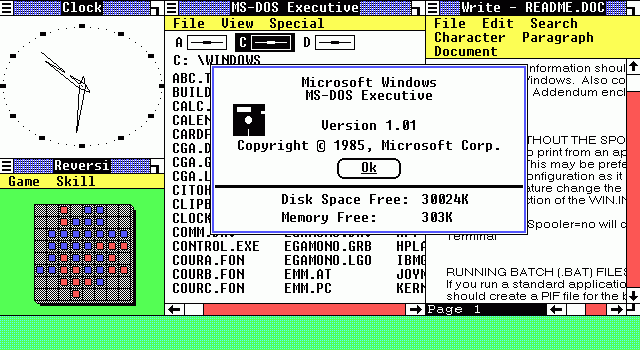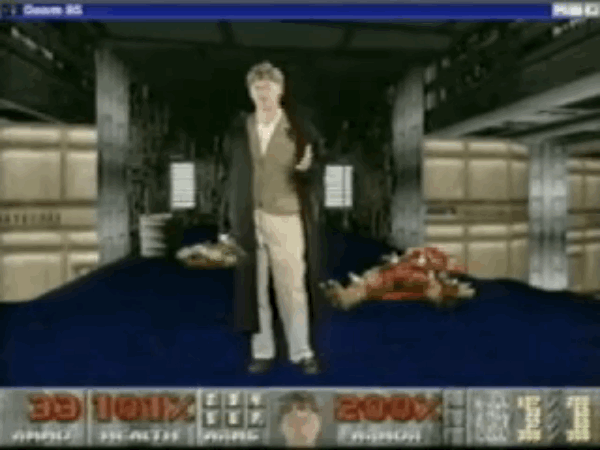
Windows 1.0 made its debut on November 20th, 1985, roughly a year after the 1984 release of Apple’s Macintosh, ushering in the start of the personal computer era and the launch of a never ending grudge match between the two tech giants.
In the span of a couple of years, computers evolved from enormous, intimidating, room filling machines only found in science labs on university campuses, to consumer facing devices designed to help make our lives more simple.

Windows 1.0 succeeded text-based software like MS-DOS, and as Steve Ballmer enthusiastically notes in the ad below, the OS was initially priced at just $99, an affordable product for the time.
Within a few short years of Windows’ release, Microsoft’s OS became the industry’s go-to PC desktop software, transforming the concept of a computer operating system into something accessible to the average individual. Fast-forward 30 years to Windows 10 and despite opting to adopt Apple’s strategy to some extent, shifting to develop its own hardware – the Surface line and Xbox products – Microsoft’s business continues to be primarily driven by its open Windows operating system.
Before Windows, OS’s were largely text based and complicated. It’s also important to point out that the Mac’s original operating system featured a graphical user interface (GUI) similar to Windows, but because of the company’s emphasis on joining hardware and software, it didn’t reach the masses the way Windows 1.0 did. In fact, if Hollywood lore featured in films like Steve Jobs and Pirates of Silicon Valley is to be believed, the first version of Windows is just a heavily modified version of the Mac’s OS.
But, at least in the early days of the battle for home computer supremacy, open software evolved into the more cost effective option for consumers, especially when it came to attracting software developers and third-party manufacturers.
Windows 1.0 also helped set the stage for the mouse, the primary way most people still interact with computers today. With Microsoft’s operating system users were able to navigate their computer’s file system by pointing and clicking for the first time, instead of typing commands like with MS-DOS.
Without the release of Windows, the PC operating system as we know it today could look significantly different. GUI features we take for granted today like icons, boxes, menus, windows, and even the inherent concept of incremental software upgrades, all grew to widespread popularity with the release of Windows 1.0.
Windows has largely been eclipsed by Mac OS X in the minds of many people, but for many, Windows 10 marks the release of one of Microsoft’s top operating systems, as well as the return of the Start Menu, a popular notable feature absent from Windows 8.
 At the time of its release, Windows 1.0 received a mixed reception due to its incompatibility with MS-DOS software, but most reviewers cited the operating system’s future potential. Windows 1.0 went on to sell approximately 500,000 copies and was eventually retired in April 1987 when Windows 2.0 was released.
At the time of its release, Windows 1.0 received a mixed reception due to its incompatibility with MS-DOS software, but most reviewers cited the operating system’s future potential. Windows 1.0 went on to sell approximately 500,000 copies and was eventually retired in April 1987 when Windows 2.0 was released.
So lets pour one out for Windows ME and Windows Vista and try to forget those operating systems ever existed, choosing to only remember how Windows fundamentally changed the world 30 years ago.
Image source: YouTube user – TheHirnheiner, 6jarjar6
Related reading: Surface Pro 4 review: Microsoft perfects the laptop/tablet hybrid formula
MobileSyrup may earn a commission from purchases made via our links, which helps fund the journalism we provide free on our website. These links do not influence our editorial content. Support us here.


